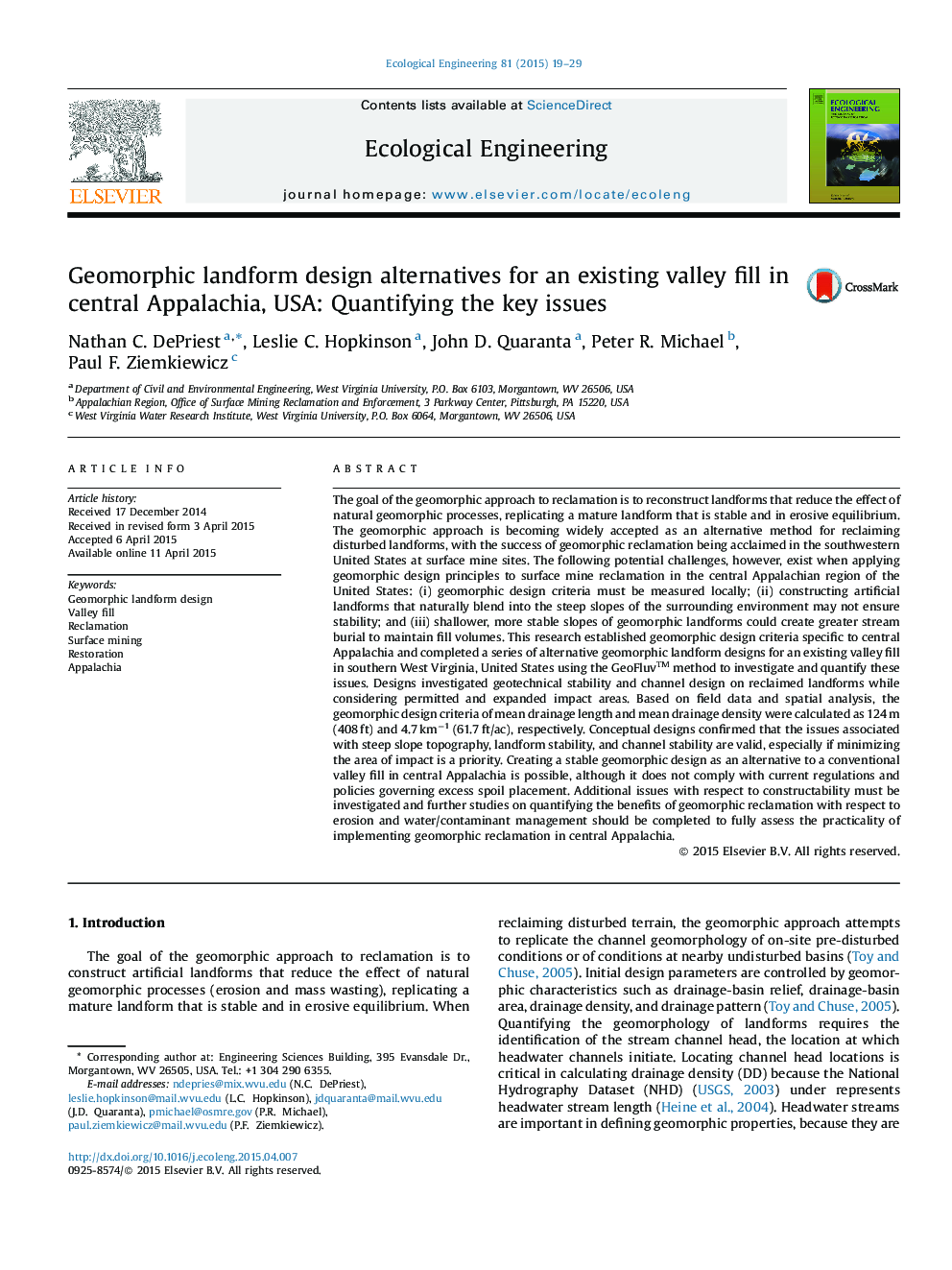| Article ID | Journal | Published Year | Pages | File Type |
|---|---|---|---|---|
| 4389052 | Ecological Engineering | 2015 | 11 Pages |
•Alternative geomorphic designs for a valley fill in southern WV are completed.•Geomorphic designs in the permitted area do not meet design requirements.•Designs in an expanded area are closer to meeting design requirements.•Potentially successful designs do not meet excess spoil placement regulations.•An expanded impact area is expected for a successful design.
The goal of the geomorphic approach to reclamation is to reconstruct landforms that reduce the effect of natural geomorphic processes, replicating a mature landform that is stable and in erosive equilibrium. The geomorphic approach is becoming widely accepted as an alternative method for reclaiming disturbed landforms, with the success of geomorphic reclamation being acclaimed in the southwestern United States at surface mine sites. The following potential challenges, however, exist when applying geomorphic design principles to surface mine reclamation in the central Appalachian region of the United States: (i) geomorphic design criteria must be measured locally; (ii) constructing artificial landforms that naturally blend into the steep slopes of the surrounding environment may not ensure stability; and (iii) shallower, more stable slopes of geomorphic landforms could create greater stream burial to maintain fill volumes. This research established geomorphic design criteria specific to central Appalachia and completed a series of alternative geomorphic landform designs for an existing valley fill in southern West Virginia, United States using the GeoFluv™ method to investigate and quantify these issues. Designs investigated geotechnical stability and channel design on reclaimed landforms while considering permitted and expanded impact areas. Based on field data and spatial analysis, the geomorphic design criteria of mean drainage length and mean drainage density were calculated as 124 m (408 ft) and 4.7 km−1 (61.7 ft/ac), respectively. Conceptual designs confirmed that the issues associated with steep slope topography, landform stability, and channel stability are valid, especially if minimizing the area of impact is a priority. Creating a stable geomorphic design as an alternative to a conventional valley fill in central Appalachia is possible, although it does not comply with current regulations and policies governing excess spoil placement. Additional issues with respect to constructability must be investigated and further studies on quantifying the benefits of geomorphic reclamation with respect to erosion and water/contaminant management should be completed to fully assess the practicality of implementing geomorphic reclamation in central Appalachia.
